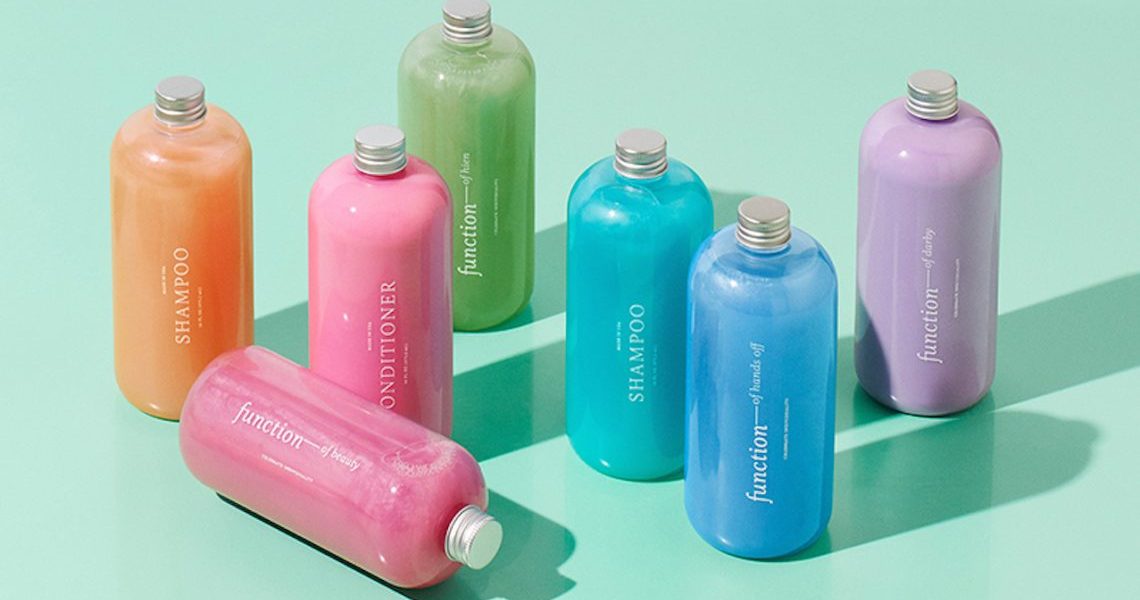On Tuesday, 5-year-old Function of Beauty pushed beyond personalized hair care with a foray into body care through body wash and lotion.
“A lot of customers have noticed that we are Function of Beauty and not Function of Hair, so they have asked ‘When are you expanding into skin care,’ or ‘When are you coming out with body care?’” said Zahir Dossa, Function of Beauty co-founder and CEO. “It seemed like a natural transition for [a brand that makes] hair care to work our way to the rest of the body.”
Function of Beauty raised $12 million via a Series A funding round in March 2017 and is valued at over $110 million. As of 2018, Function of Beauty has produced over 1 million individual hair care formulas and, in theory, is capable of producing upward of 54 trillion today. This is because the brand has a four-question quiz (not including scent and color questions), which gathers 10 data points on subjects like hair goals and hair type. For body care, there are four data points gathered, with the primary fact-finding around skin moisture levels, although Dossa said that algorithmic improvements are always taking place.
Since the beginning of the year, the personalized beauty category has rapidly expanded. Prose launched a services membership on July 13, while L’Oréal USA, introduced an at-home customized beauty device at CES in January. Dossa noted that he did not expect to see many customized body-care competitors, because the $19.99 price point (for two 8 ounce products) was difficult for the company to achieve. Function of Beauty can achieve economies of scale because it has vertically integrated its manufacturing and distribution. The company operates three facilities across Michigan and Pennsylvania and opened a new 130,000 square-foot facility in Pennsylvania in July, which it purchased in an undisclosed all-cash transaction in 2019, said Dossa.
Dossa said that Function of Beauty is uncertain of what percentage of the company’s revenue that body care will make up. He said that, while body care may bring in new customers, the company will not be investing in significant growth-marketing for the category. Body care will be largely marketed toward existing Function of Beauty customers via unpaid marketing. In addition, it will now receive equal attention as hair care on the Function of Beauty homepage, in email marketing and through the brand’s social media pages. As of July 20, Function of Beauty currently has 687,000 Instagram followers, a 39% year-over-year increase from 2019. And according to Instagram and social media marketing company Phlanx, Function of Beauty has the most engagement (as measured by likes and comments) of all hair-care brands at 1.78%. Herbal Essences has the second most, at 0.69%.
Dossa would not comment directly on Function of Beauty’s future category expansion plans, but indicated that the company will continue to roll out categories.
“Our big goal is to make personalization the norm, not a niche,” said Dossa. “We will use our technology automation [and] customer base to continue pushing that frontier as far as we can. [We have] the ability for our brand to flex beyond hair care, and it’s going to be a continuing trend as we try to focus on how we become this huge CPG [company] in our own right, but one that’s built on this idea of personalization.”
Samantha Mang, Function of Beauty svp of brand and innovation, said that the company has been developing the body lotion and body wash since 2017, but that hair care will remain a pillar of the business.
“Our core will always be hair, and we have a full pipeline [of new product] for hair care later this year, as well as next year,” she said.




